PLUS: A bonus vintage interview with ROBERT STACK…
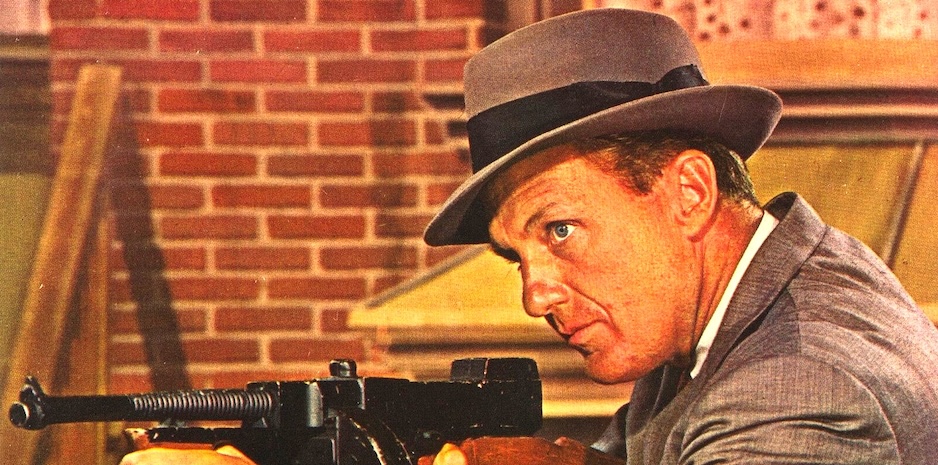
By PETER BOSCH
It was largely a fictional cops-and-robbers TV show, but there was a major difference — it was based on real people and real times. The citizenry of Chicago from 1920 to 1933 lived through desperate years when organized criminals threatened honest people and openly killed opposing mob members in public, all without worries of pushback from local authorities. It was the time of Prohibition, when the 18th Amendment to the Constitution of the United States blocked the manufacture, sale and transportation of intoxicating beverages anywhere in America, giving rise to criminals who would provide them to a thirsty public.
In Chicago, that was Al Capone.
Chicago needed help, and the city would get it from Eliot Ness and The Untouchables.
The Untouchables series debuted on ABC-TV on October 15, 1959, 65 years ago, with Robert Stack as Ness. (There had been a two-part pilot earlier that year on the TV anthology series Westinghouse Desilu Playhouse, with Stack as Ness and Neville Brand as Capone. The two-parter was then edited into a feature-length motion picture, The Scarface Mob, and released to movie theaters prior to the debut of the regular television series.)
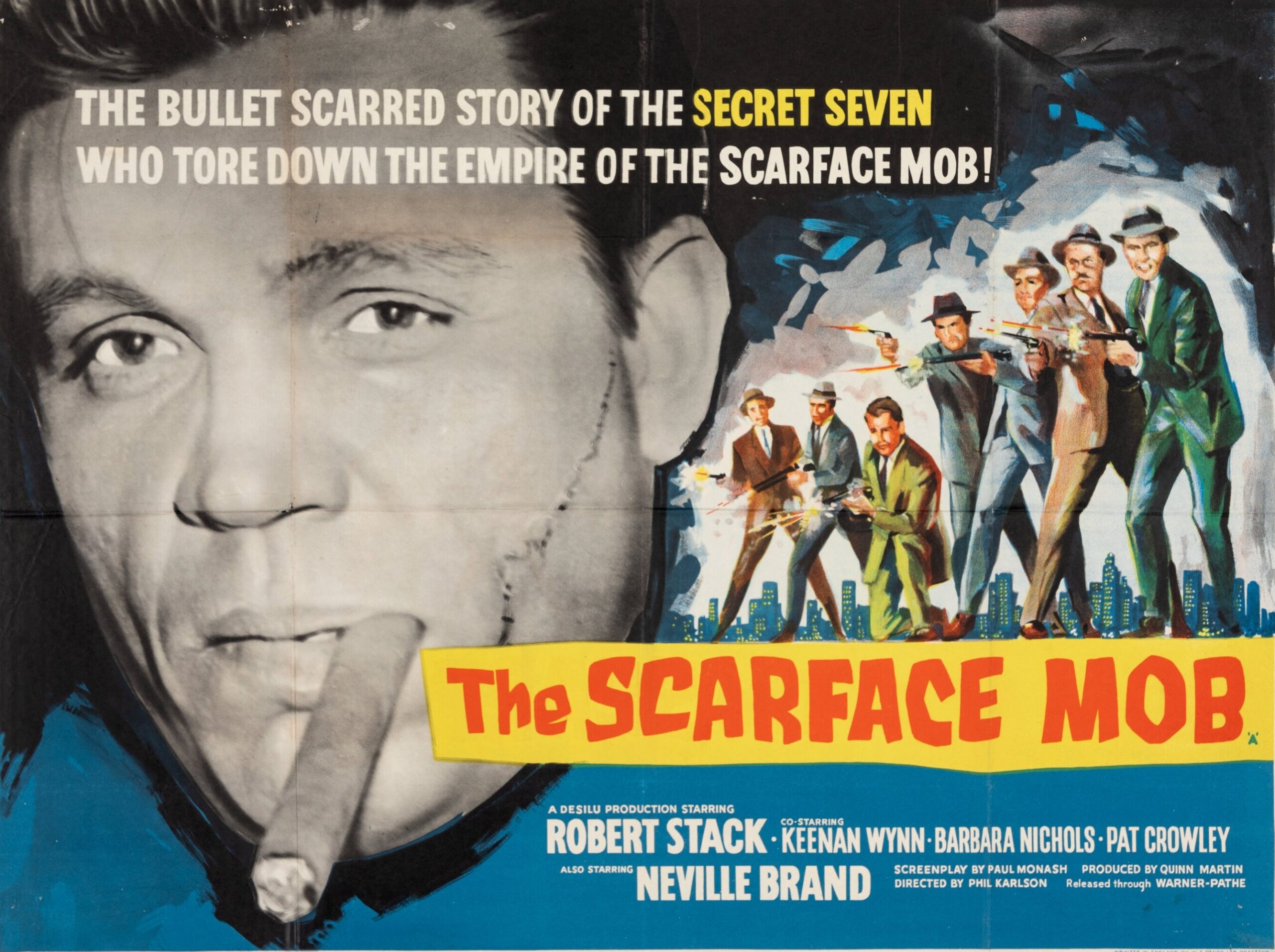
The Scarface Mob (1959) movie poster.
For the program’s 65th anniversary, here are 13 THINGS TO KNOW ABOUT THE UNTOUCHABLES:
—
1. The real Untouchables consisted of more members than the few men seen on the TV series. Approximately 16 men could lay claim to being an “Untouchable” during the active years. (Other than Eliot Ness, none of the names used in the series matched that of the real team.)
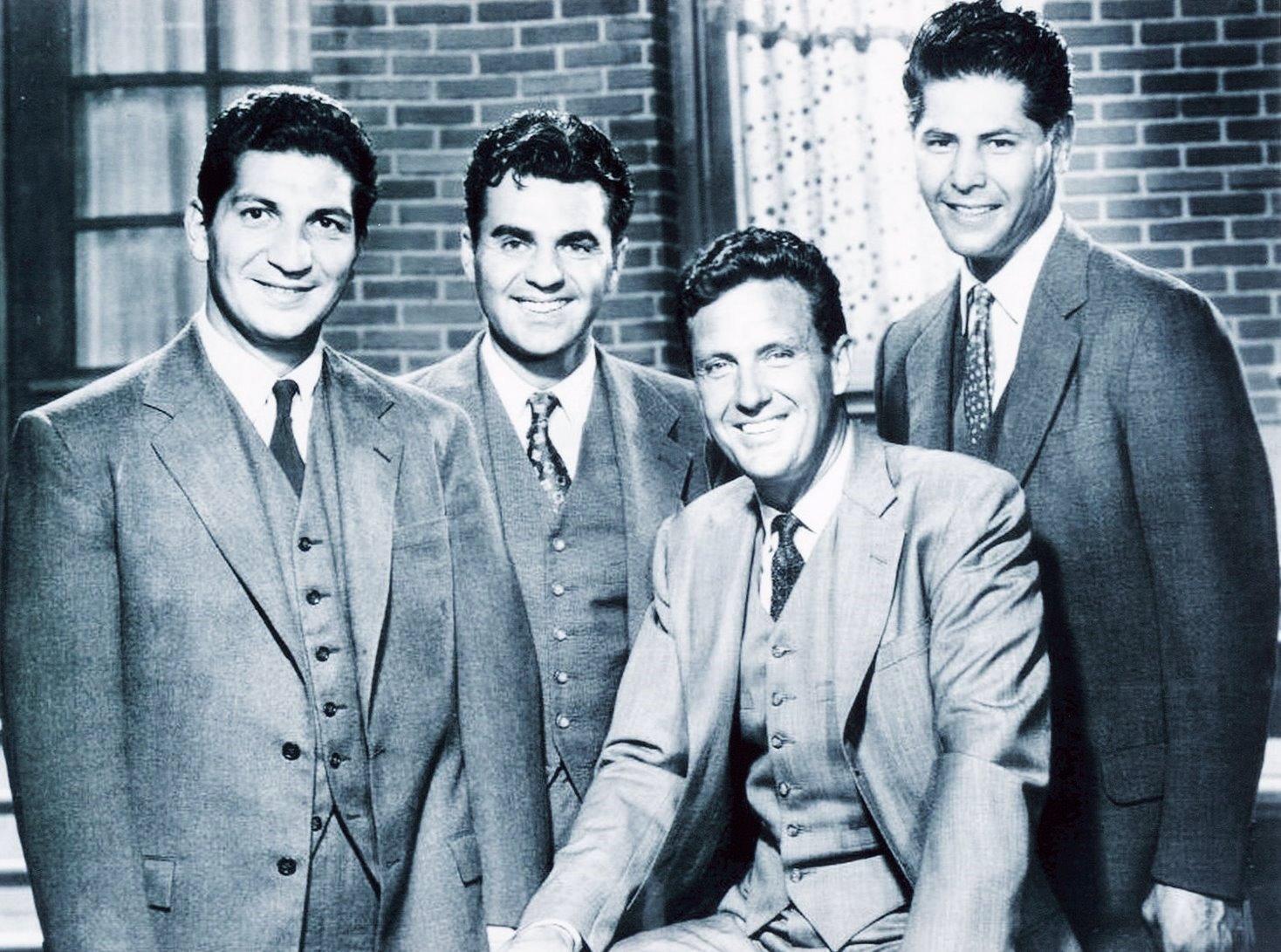
The Untouchables TV cast: (L-R) Nicholas Georgiade, Paul Picerni, Robert Stack, and Abel Fernandez.
—
2. So inspiring was this young crusader that comic strip creator Chester Gould based a new character on him — Dick Tracy.

Cover to The Complete Chester Gould’s Dick Tracy Volume 1 (IDW, 2012).
—
3. The Untouchables TV program was a Desilu production, the Hollywood television enterprise founded and co-owned by Desi Arnaz and Lucille Ball. Desilu believed that the memoir Ness co-wrote, The Untouchables, with Oscar Fraley, a sportswriter, would make good TV programming. (The book was published in 1957, after Ness’ death from a heart attack that year.) Desilu was an excellent judge of material. Among their other productions were I Love Lucy, The Lucy Show, Mission: Impossible, Star Trek, and Mannix.
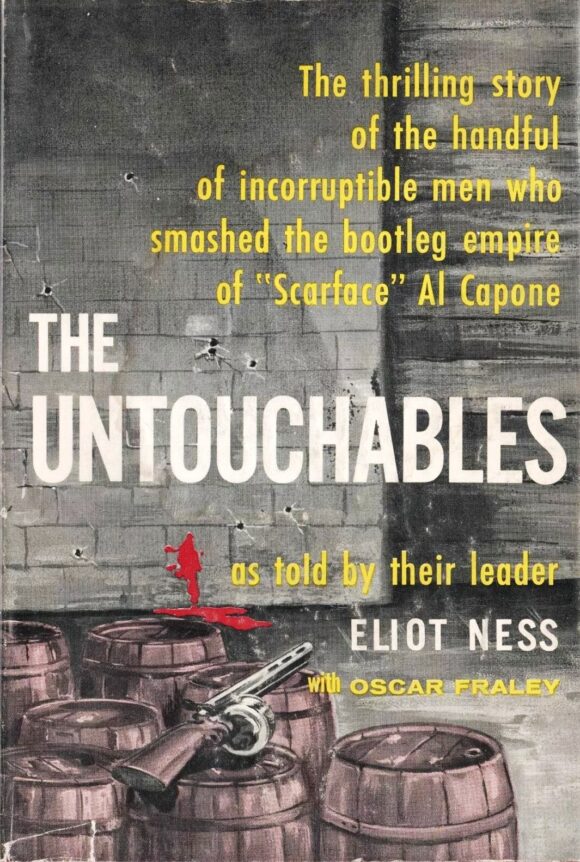
The Untouchables book by Eliot Ness with Oscar Fraley (Julian Messner, Inc., 1957)
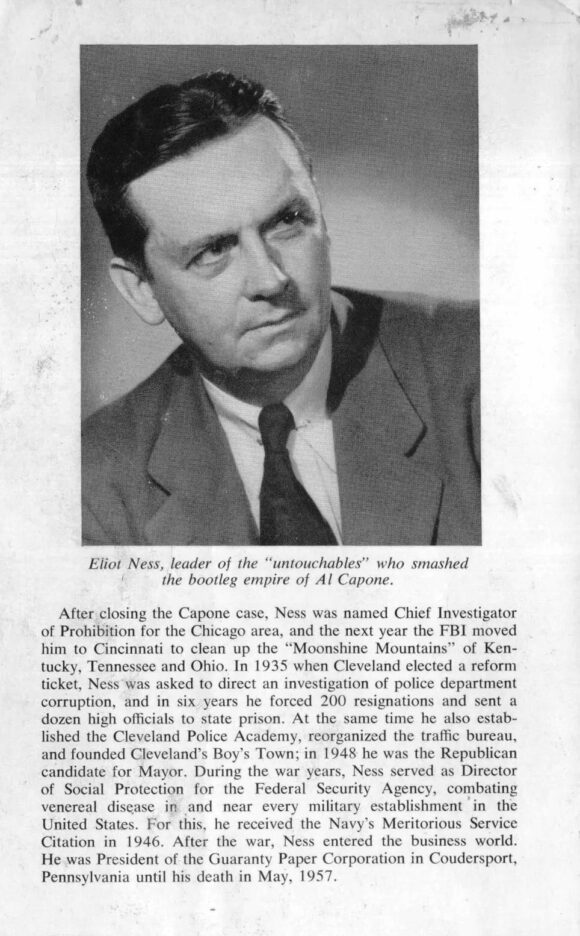
—
4. Arnaz’s original choice to play Ness was Van Johnson but the actor’s manager/wife asked for double the salary offered. Arnaz declined and went with Robert Stack.
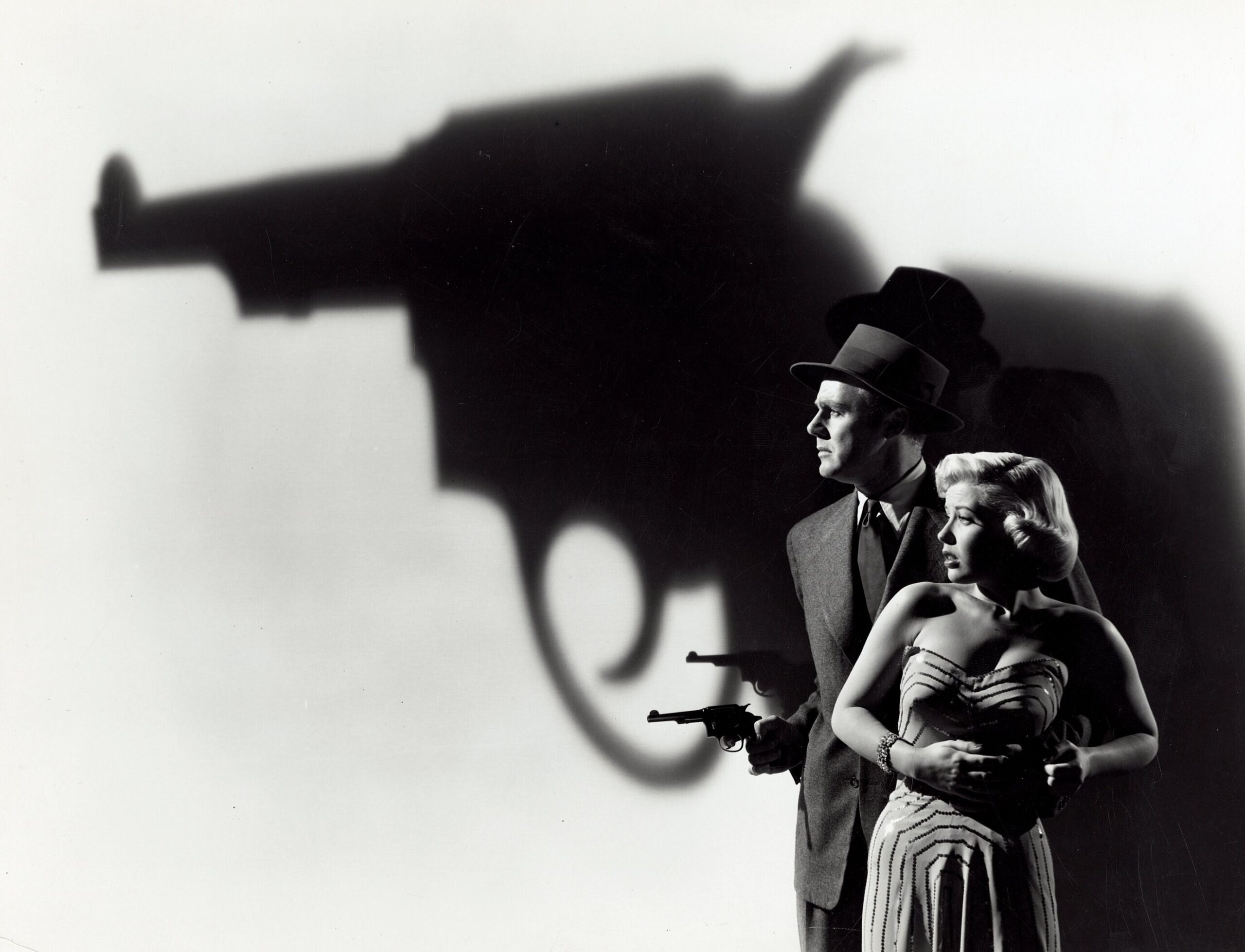
Van Johnson with Gloria DeHaven in Scene of the Crime (MGM, 1949)
—
5. The inclusion of an Italian member of the TV Untouchables team was a concession to Frank Sinatra and other prominent Italians protesting the number of criminals on the show with Italian names.
6. The real Eliot Ness and Al Capone were younger than portrayed on the series by Stack and Brand. At the time that Capone was sentenced to prison for 11 years for tax evasion, Ness was only 28 and Capone was just 32.
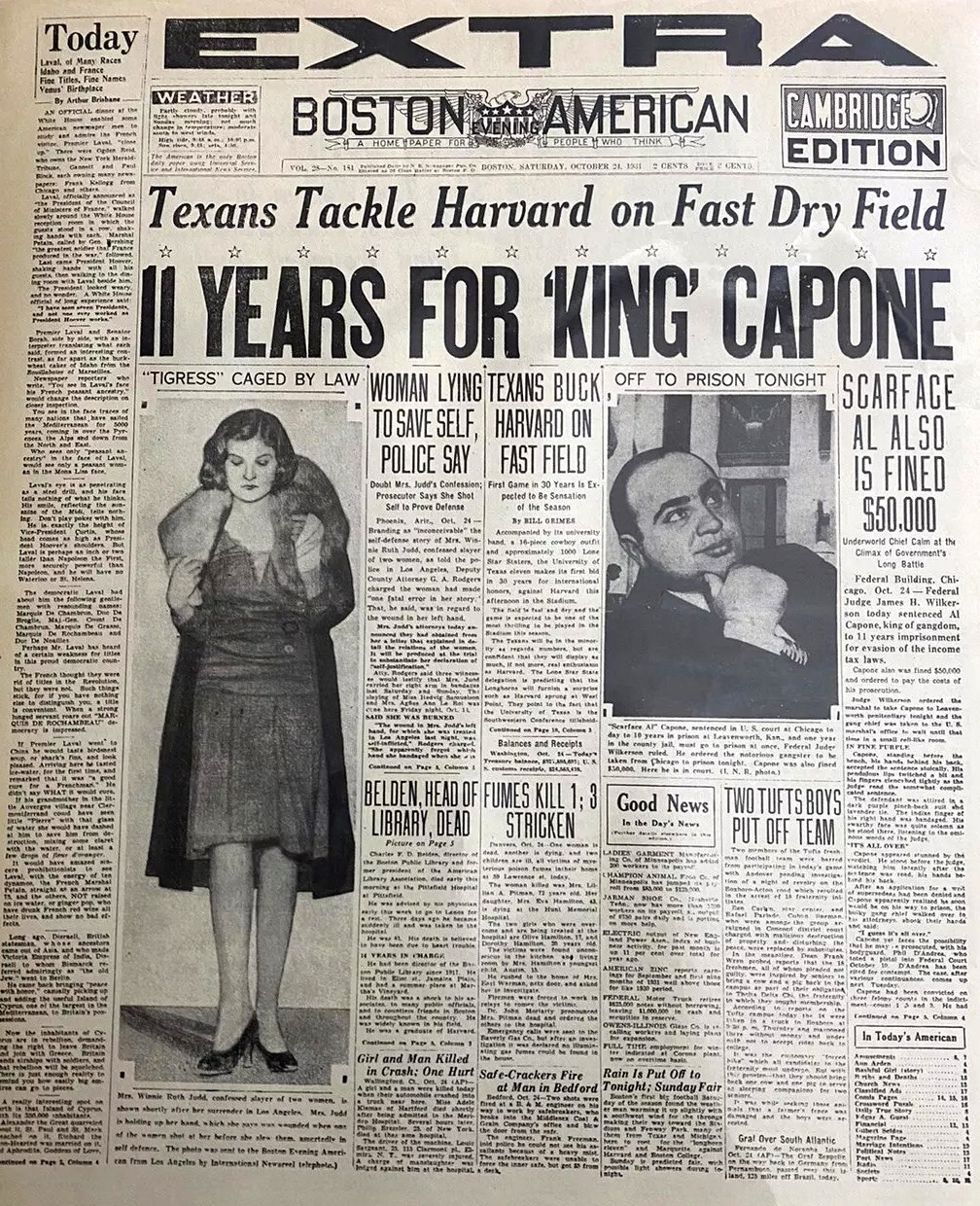
Al Capone’s sentencing on October 24, 1931 was news nationwide, as evidenced by this front page of the Boston American.
—
7. The real Ness met Capone only one time and that was when taking him to the train that would carry Capone to prison.
8. The TV episodes showed Ness capturing or killing a number of major real-life criminals but, in reality, he was not involved in those other cases at all. Just a little literary license in order to fill four seasons.
9. During that four-year run of the program, which ended May 21, 1963, major Hollywood stars and upcoming young talent appeared on The Untouchables, including Barbara Stanwyck, Patricia Neal, Lee Marvin, Ricardo Montalban, Ed Asner, Robert Redford, Peter Falk, Elizabeth Montgomery, Ryan O’Neal, Leonard Nimoy, Carroll O’Connor, Anne Francis, Dyan Cannon, James Coburn, and Cliff Robertson — and that is just a select few!
10. Never appearing on camera, the narration each week was by one of America’s most famous newspaper columnists, Walter Winchell. While The Untouchables benefited from his established reputation and his staccato delivery, Winchell’s once-powerful, decades-long career was in a downward spiral. He was considered a vicious man whose gossip in his daily newspaper column and on his weekly radio program had hurt people’s lives and their careers.
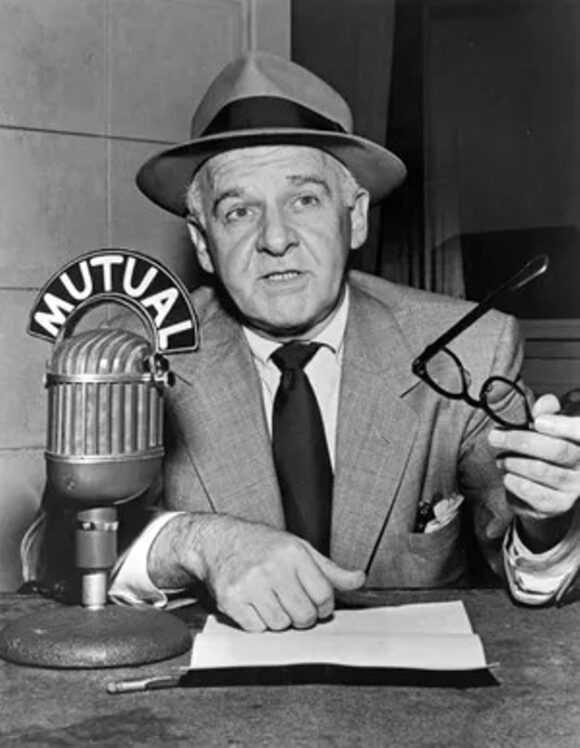
Walter Winchell
—
11. Though The Untouchables aired during a late evening hour (from 9:30 to 10:30 pm, due to its adult nature and violence), merchandising of the show was aimed at kids: board games, bubble gum packs with miniature comic stories and police badge stickers, toy pistols, sawed-off toy shotguns and, naturally, four different comic books (with great art by Dan Spiegle in them all). A selection for junior Untouchables:
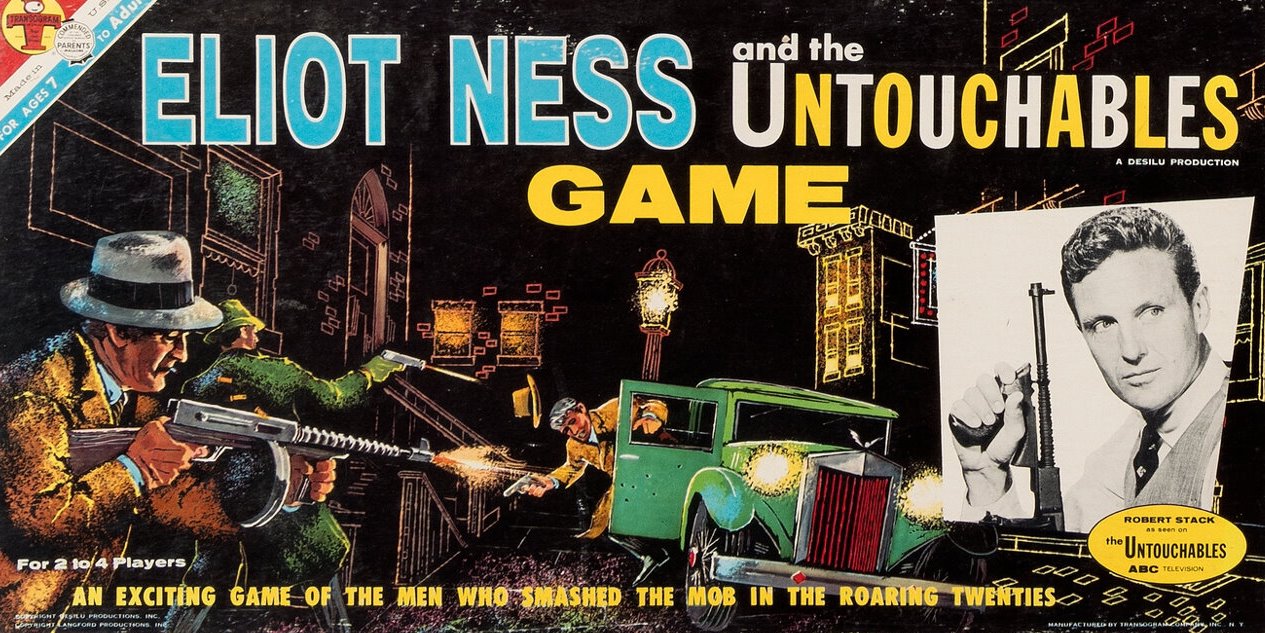
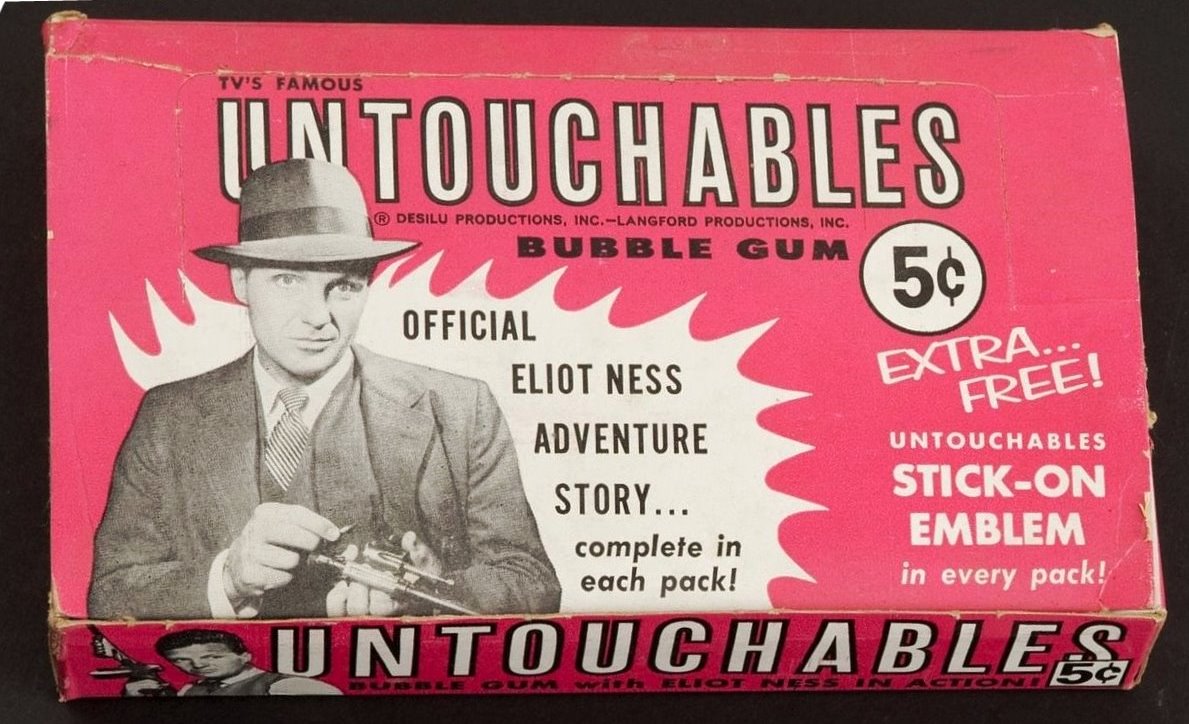
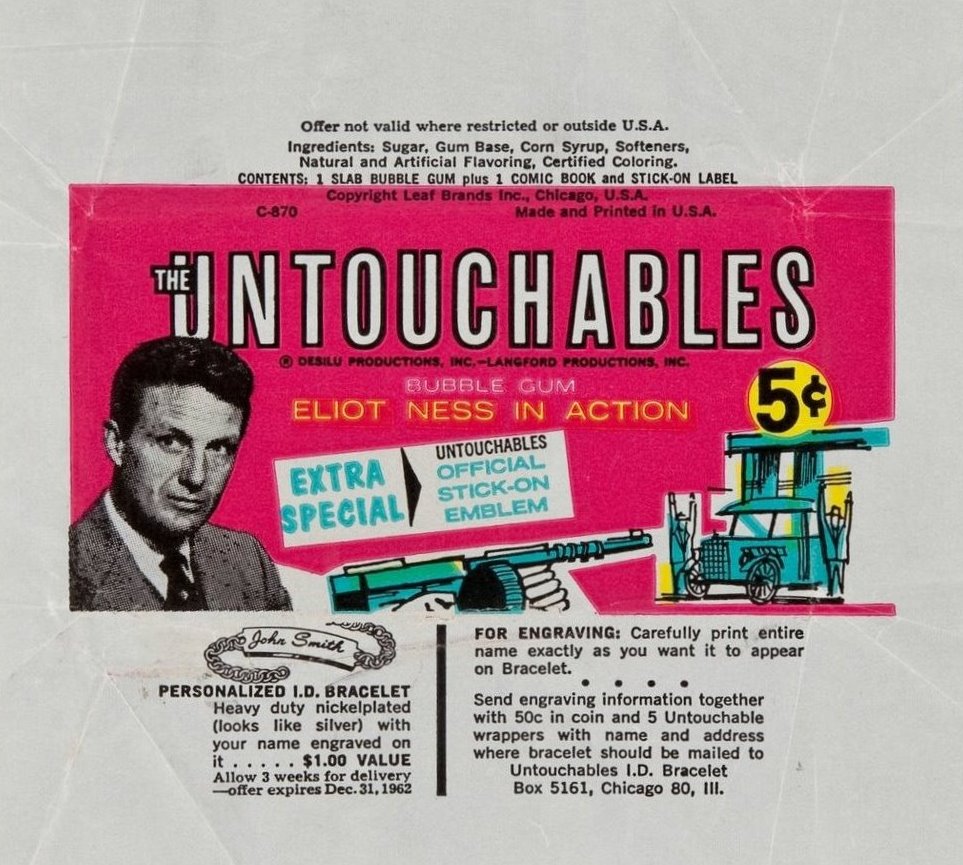
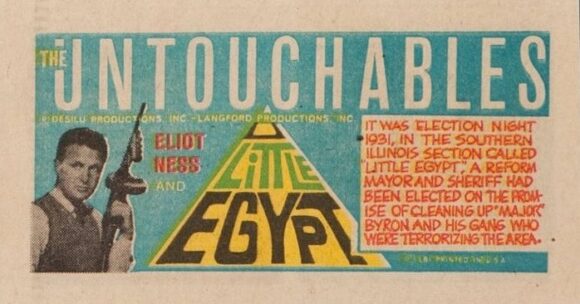
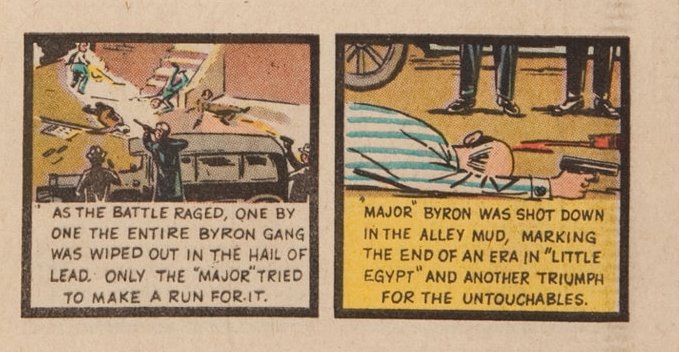
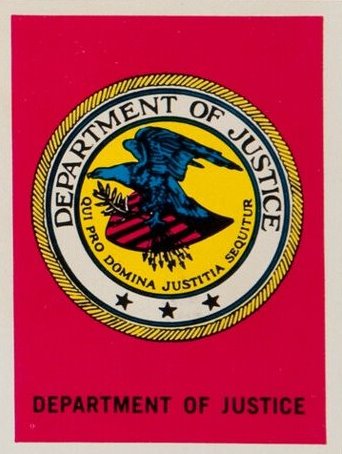
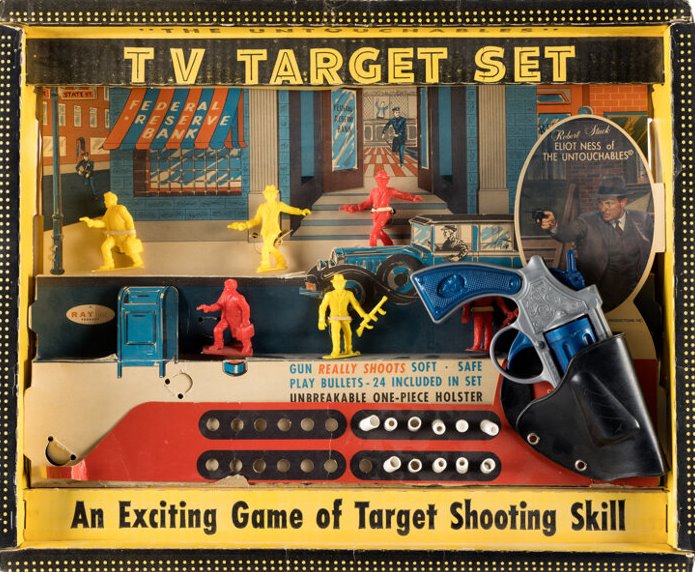
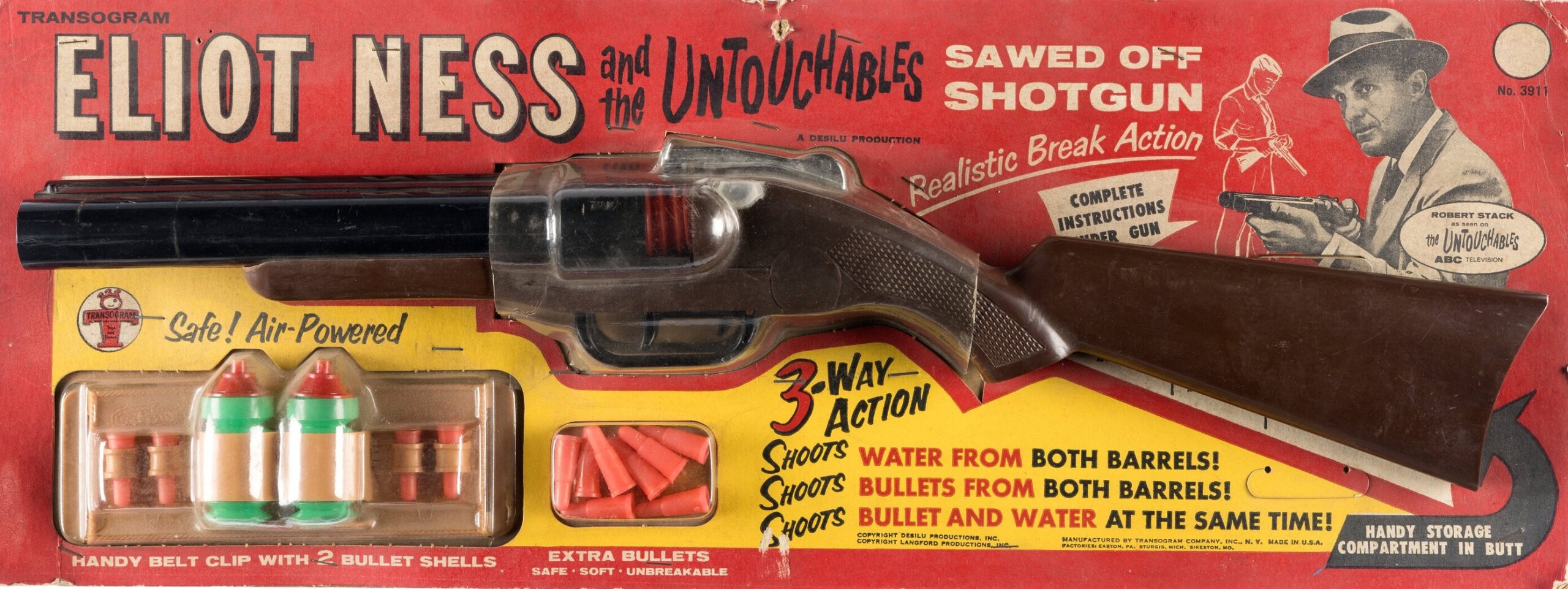
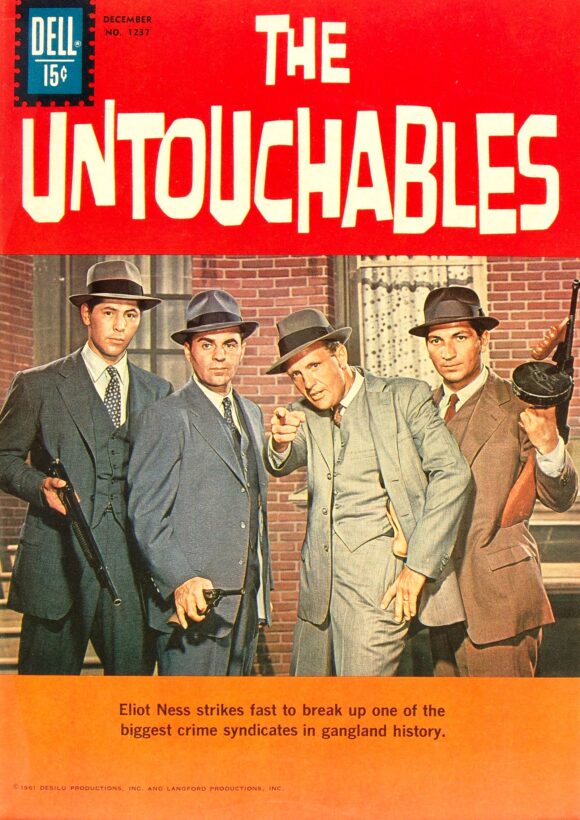
Four Color #1237 (Dell, Oct.-Dec. 1961)
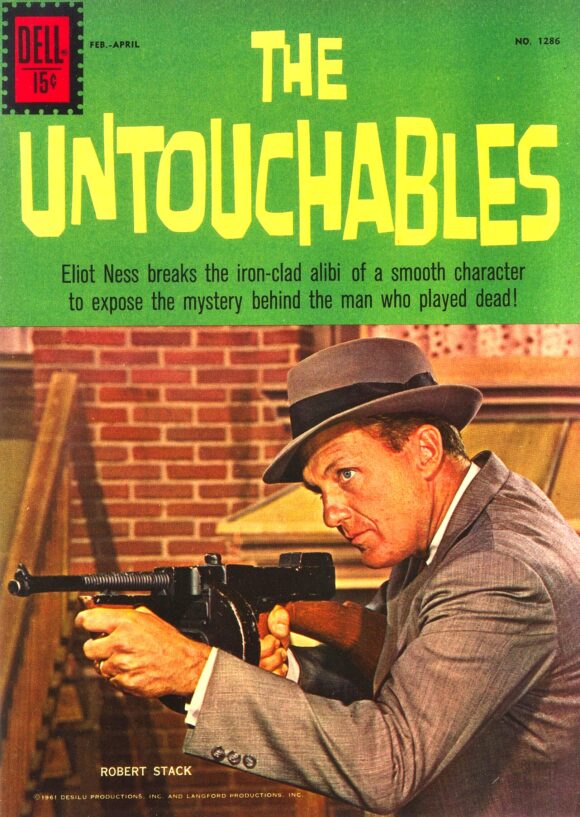
Four Color #1286 (Dell, Feb.-Apr. 1962)
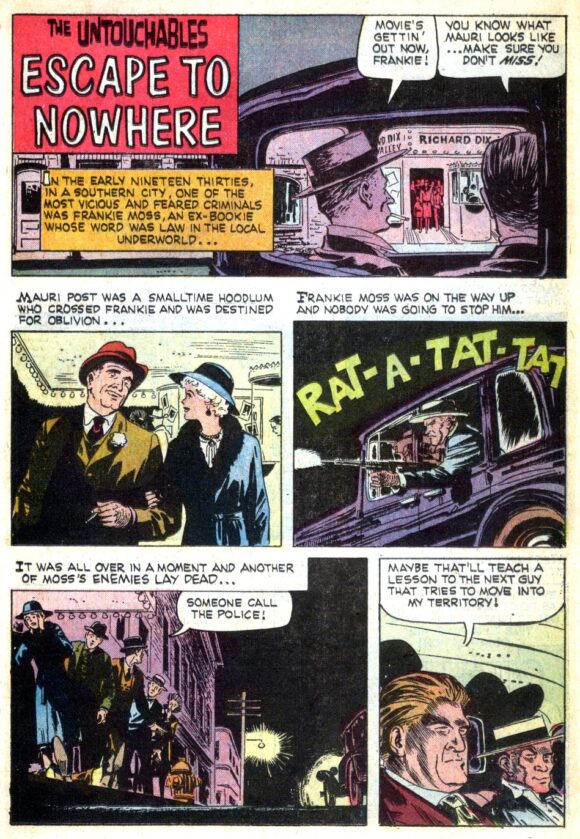
Four Color #1237 (Dell, Oct.-Dec. 1961). Art by Dan Spiegle. Writer: unknown.
—
12. Four years after the TV series ended, Robert Stack and Bruce Gordon (Frank Nitti on The Untouchables) appeared on the March 14, 1966, episode of The Lucy Show called “Lucy the Gun Moll.” The parody of The Untouchables gave a rare look at the comedy chops of Robert Stack that audiences wouldn’t see again until Airplane! (1980).
—
13. During a period of TV nostalgia, NBC OK’d The Return of Eliot Ness (November 10, 1991), a TV movie with Stack reprising his famous role. Unfortunately, the story was mediocre, with Ness in 1947 investigating the death of a former Untouchable.
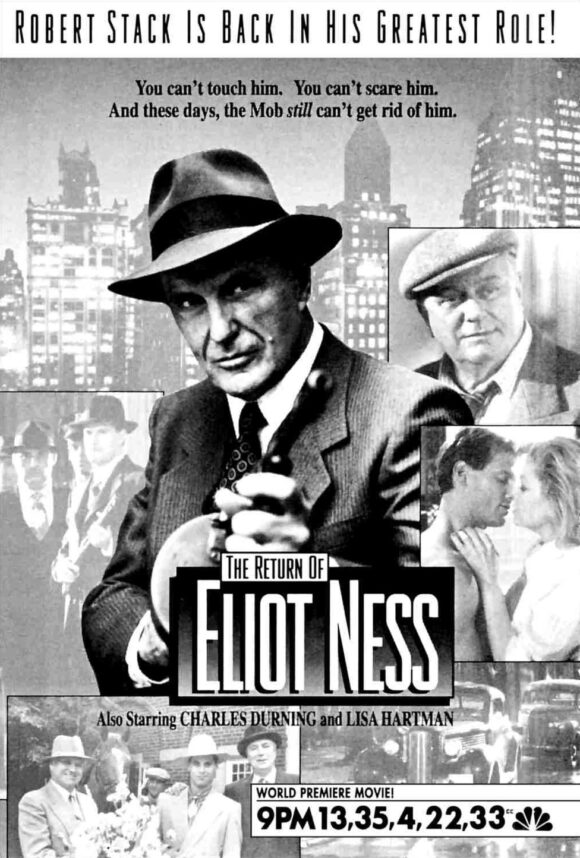
TV Guide, Nov. 9-15, 1991
—
The Untouchables would carry on in the popular motion picture of 1987, which would be followed by a two-season TV series in 1993. Max Allan Collins, famous comic book scribe (as well as probably the greatest living authority on Eliot Ness), wrote several novels about the G-man, and a one-man play, Eliot Ness: An Untouchable Life, which was filmed in 2005.
Will there be further incarnations of Eliot Ness and the Untouchables in the future? The more important question might well be, “Will an Eliot Ness appear when there is another Capone-like figure to be dealt with?” I’ll let Robert Stack himself have the final word on that…
Many years ago, I did a phone interview with Stack for a newspaper article and, of course, the subject of The Untouchables TV series came up.
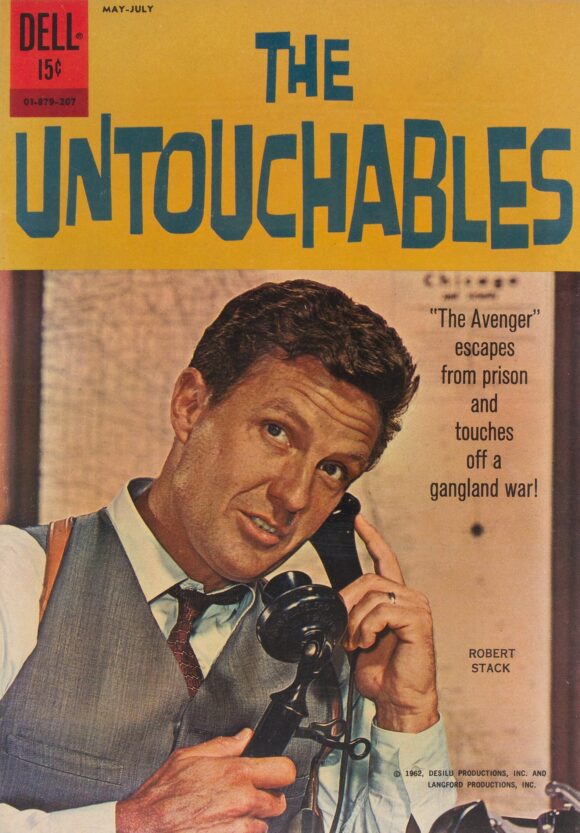
The Untouchables #01879-207 (Dell, May-July 1962).
During the time it was on the air, the program was the subject of criticism by some who were concerned the display of violence was not what should be broadcast over their TV sets. Even though there had been decades between the end of the show and our interview, it was easy to tell (even over the phone) that just the mention of the subject was enough to trigger his frustration.
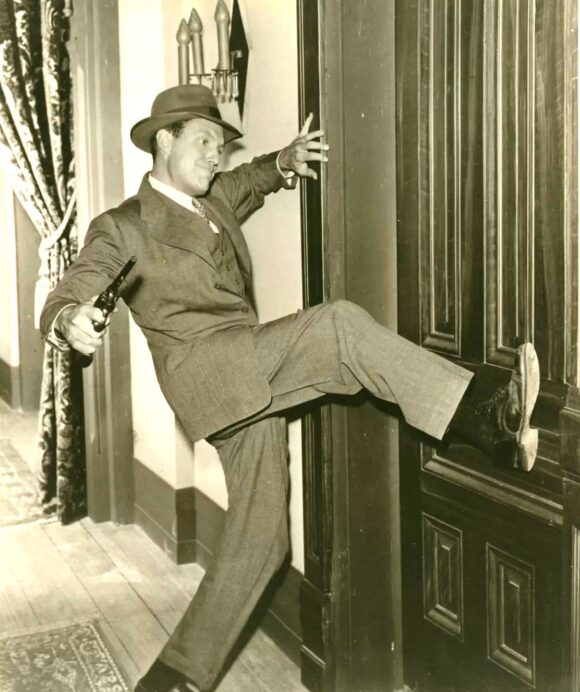
“If you want my frank opinion,” he said, “ever since The Untouchables, I deal much more in the morality than I do with the details. Now, on The Untouchables, I had this same song and dance about this ‘terrible violence.’ Well, in the first place, it’s the story of Eliot Ness and Al Capone. It’s not as if you are doing Snow White and the Seven Dwarfs. If you don’t show evil, you can’t show good. And I think all this ‘monkey-see, monkey-do’ concept and ‘don’t do this and don’t do that’ and all you wind up with is Little House on the Prairie.”
“My main thought is that as long as you empathize with the side of law and order and the good guy, you stand to win,” Stack said. “You empathize with The Godfather… then I think you’re in trouble. People just can’t see the forest for the trees and don’t acknowledge it’s happening now. As Reagan said… these are not people who are struggling for a livelihood. These are people who have chosen this way of life.”
“My point is if what you do does not represent what happens outside the television set or outside the sanctum of your little house,” he continued, “then you’re doing a lousy job. Right now, it’s a very dangerous time to live and I think that the side of law and order should be shown, within reason, to be the good guys and let the bad guys take the rap for once. I’m tired of the Godfathers… where the crumbs wind up being the heroes.”
—
MORE
— 13 THINGS TO LOVE About TV’s VOYAGE TO THE BOTTOM OF THE SEA. Click here.
— THE TWILIGHT ZONE: Dig These 13 Great TIME-TRAVEL EPISODES. Click here.
—
13th Dimension contributor-at-large PETER BOSCH’s first book, American TV Comic Books: 1940s-1980s – From the Small Screen to the Printed Page, was published by TwoMorrows. A sequel, about movie comics, is coming soon. Peter has written articles and conducted celebrity interviews for various magazines and newspapers. He lives in Hollywood.
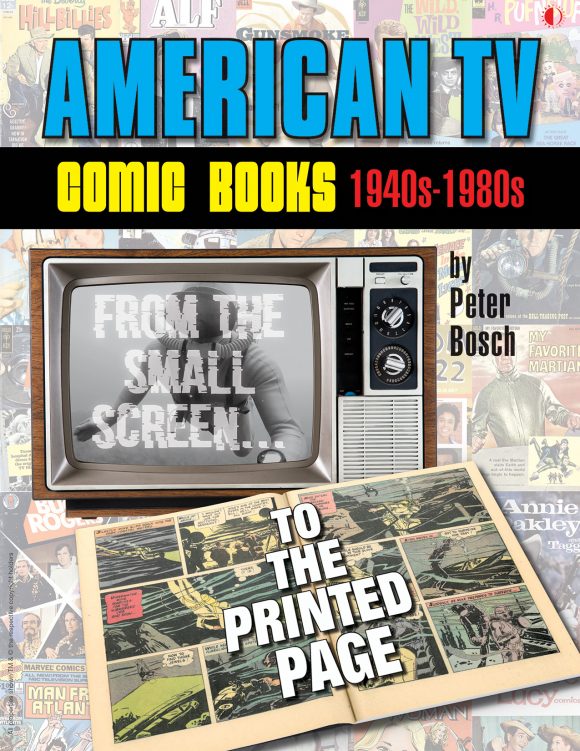

October 15, 2024
Thanks for this! I got to see a lot of the show in reruns a decade or so ago! And my late husband and I loved the Lucy send-up!